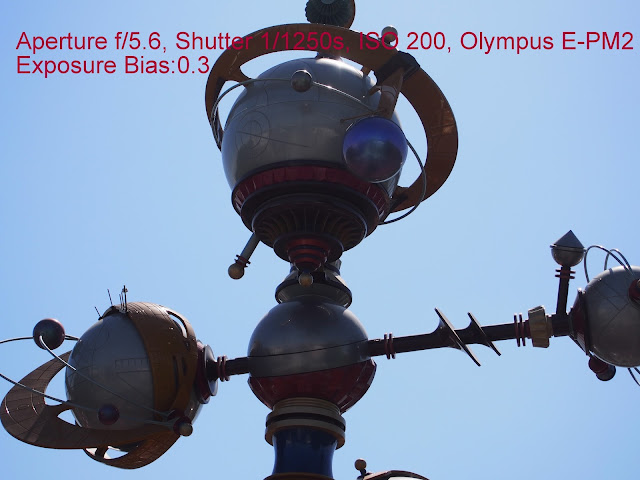This is a photo of one structure at Disneyland, California. I wanted to take a photo from the line I was in for another ride there. The sun was in front so the first photo came very dark. As this structure was far away, using a flash would be of no use. What should you do to make your photo better?
The issue was with the object being too dark. Solution was to provide more light. Flash would not be useful as flash light does not work beyond 15-20 feet.
Solution: I needed to tell camera to take in more light. Most cameras and even smartphone cameras have EV (Exposure Value) compensation. You can access it with the button or symbol that reads like +/_

I clicked on it and moved it to the right, towards positive value. I sent it between +2 and +3. How did I choose this number? There is no rule. With Trial and Error photography, remember, we use our brain the least when it comes to photography? LOL. If I need too much light in the new photo, I would select +2. If I want only a little more light, I would select +1/2 or +1/3. By choosing +2.7, I wanted the camera to take in more than double the light than what it was thinking was correct light (exposure).

The issue was with the object being too dark. Solution was to provide more light. Flash would not be useful as flash light does not work beyond 15-20 feet.
Solution: I needed to tell camera to take in more light. Most cameras and even smartphone cameras have EV (Exposure Value) compensation. You can access it with the button or symbol that reads like +/_

I clicked on it and moved it to the right, towards positive value. I sent it between +2 and +3. How did I choose this number? There is no rule. With Trial and Error photography, remember, we use our brain the least when it comes to photography? LOL. If I need too much light in the new photo, I would select +2. If I want only a little more light, I would select +1/2 or +1/3. By choosing +2.7, I wanted the camera to take in more than double the light than what it was thinking was correct light (exposure).
See the magic! As camera too more light, I was able to get the structure and colors better than what I had got in the first photo!

Similarly, if your first photo is too bright and you want to make it darker, press the EV compensation button and set some negative value. The more negative value you choose, the darker the image will be. What will be the correct value? Try 2-3 different values and you will have one photo you like!


















